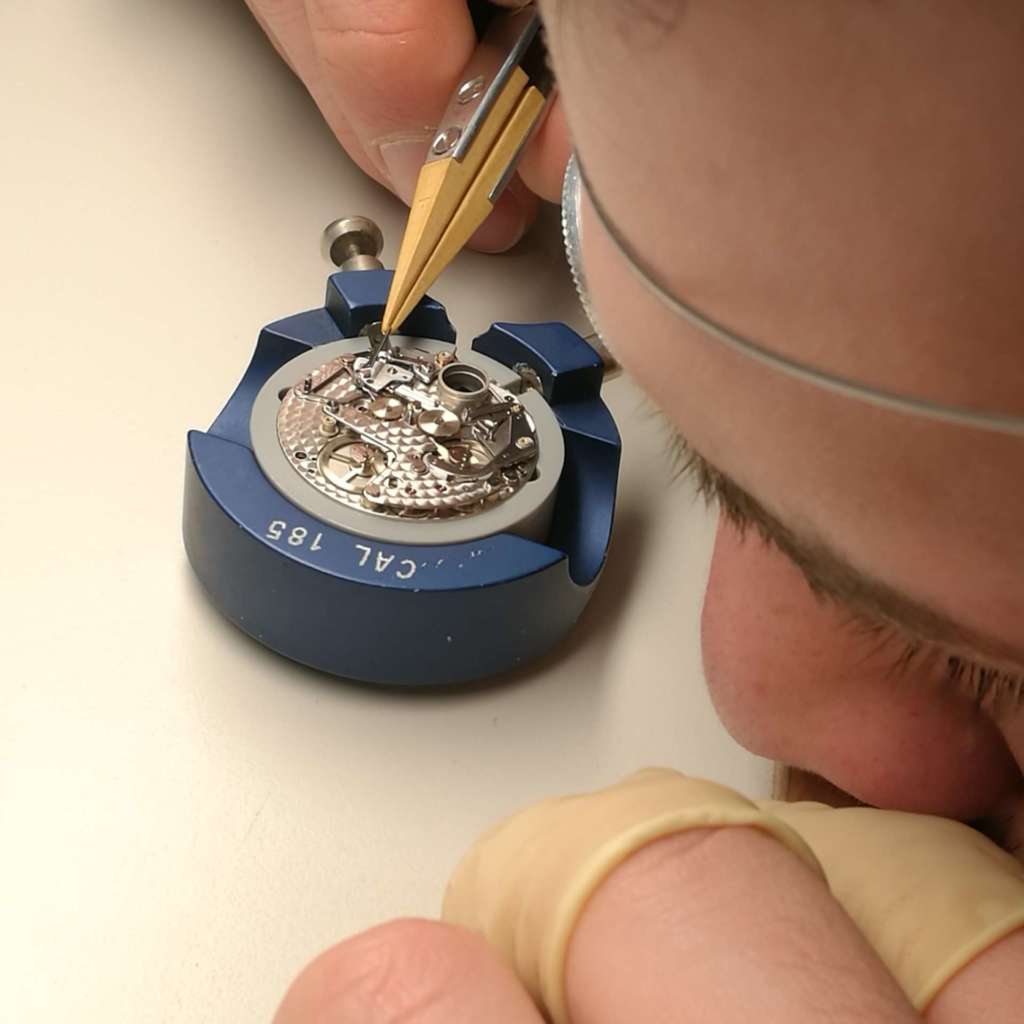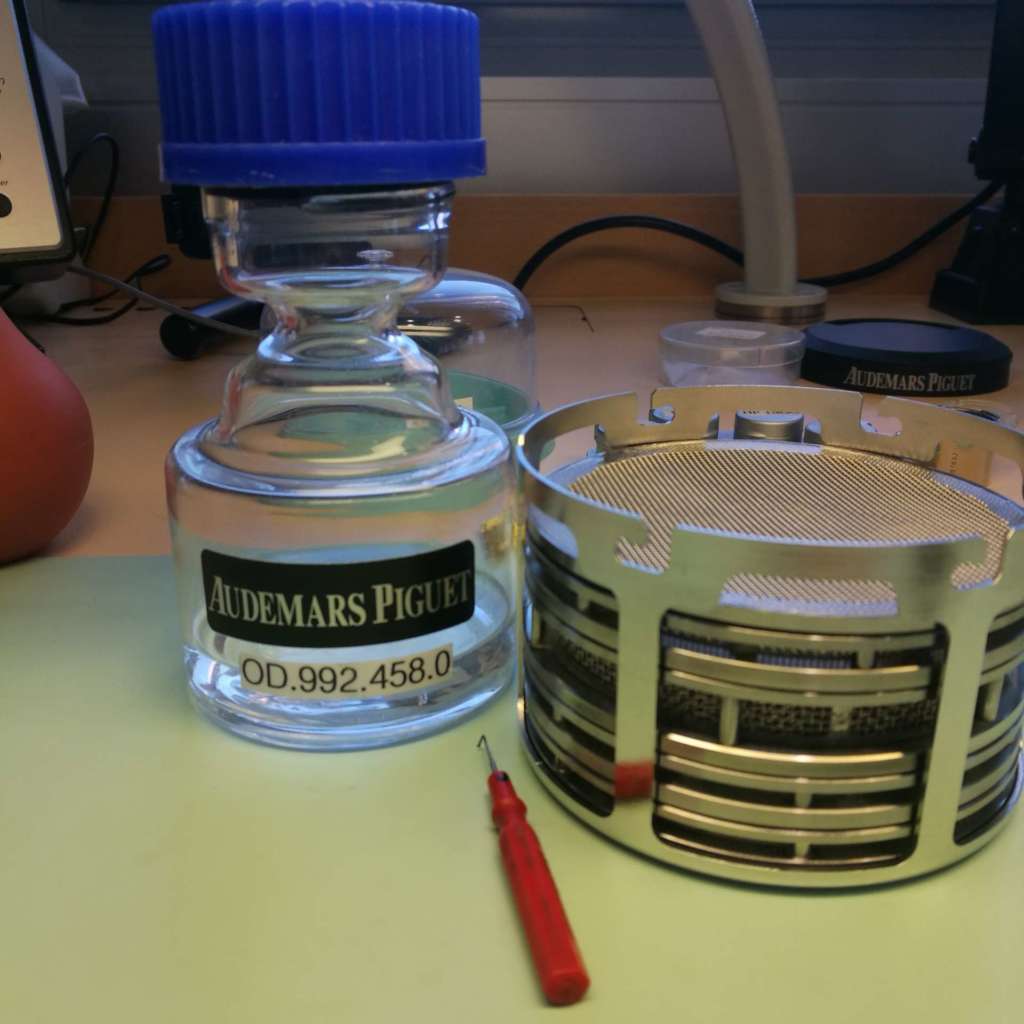In my job, I have the pleasure of meeting many brilliant horologists. I respect the profession as both a science and an art form. Recently, I have crossed paths with someone who embraces
the role of scientist and artist better than perhaps any I’ve encountered before. We sat down for a chat recently as I wanted to tell his story and he obliged. I’d like to introduce my friend, Oscar Raggi.

Oscar’s Introduction to Horology
I love turning a phrase, as they say, but I couldn’t have described Oscar’s upbringing in horology better than he did:
“Growing up amidst the intricate world of watchmaking, where every tick of the clock held a whisper of magic, shaped the very fabric of my being. It was a realm woven with the threads of
time and craftsmanship, where my father, a maestro of horology tracing back three generations, cast his spell upon me.
His workshop, a sanctuary of ticking treasures and gleaming gears, became my sacred ground, a place where I learned to dance with the delicate movements of timepieces. From tender
years, I stood by his side, an eager apprentice to his artistry. Amidst the scent of oil and the gentle hum of machinery, I absorbed the secrets of the trade, each turn of the screw a lesson,
each delicate balance wheel a heartbeat of fascination.
While other children were building castles from LEGO bricks, I fashioned my dreams from the intricate mechanisms of vintage alarm clocks and stately table clocks. With nimble fingers and a thirst for knowledge, I delved into the labyrinthine depths of horological lore, honing my craft with each delicate touch.”
Oscar went on to tell me about how he completed his first watch repair at just 8 years old! While it was a simple battery change, I’m not sure my 8 year old could operate with precision like that. His first major timepiece repair came at age 15, when he repaired an ancient pendulum clock. Truthfully, I’ve seldom heard a story of someone more deeply raised on watchmaking. It’s the way watchmakers have been trained for hundreds of years but not the way watchmakers tend to learn the craft in the modern era.
Professional Career

After serving as an apprentice to his father as a child, Oscar traveled from his home country of Italy to Switzerland to attend various schools and trainings. He traveled throughout Switzerland, completing internships in Pesaux, Le Landeron, and other locations. Once he completed those internships, Oscar trained at ETA and W.O.S.T.E.P. to learn the ins and outs of quartz movements, escapements, balance springs, and chronograph complications.
While many of us would consider that a sufficient education, Oscar wanted to be the best watchmaker in Italy, so he went on to learn about repair and mechanics for Audemars Piguet,
Omega, IWC, Jaeger-LeCoultre, Panerai, and Rolex. While he loved working on some of the brands – especially Audemars Piguet and Jaeger-LeCoultre, Oscar knew that he wanted to open an independent workshop so he could keep the fierce independence from which watchmaking originated centuries ago alive. So to that end, Oscar started his workshop in Italy.

In starting his shop, one of Oscar’s goals was to be an exclusive authorized watchmaker for several brands in Italy without having a direct brand affiliation. This would allow him
independence but also frequent business. He achieved this goal and later set his sights higher, on keeping his craft alive. But more on that later. A point of pride for Oscar is that he is one of
the few modern watchmakers who can service antique clocks – including those so old that parts no longer exist. Oscar has such an innate knowledge of movements that he can find or create substitute parts to make them run again.
Oscar makes a point of being nimble and resourceful enough to service a myriad of timepiece styles and technology. However, his greatest strength is in mechanical movements – both
vintage and modern, high-tech timepieces. From the outside looking in, I think he has a personal affinity for timepieces of historical significance. One such example is his recent
restoration of a Leonidas chronograph with a flyback function – a watch known on a colloquial basis as the “bomb dropper.”

This World-War II antique timepiece was one of many that helped win the war and, in essence, unleashed an entire era of wristwatches. For Oscar, he was humbled to repair the timepiece because it helped him feel connected to the heroes of history who held that watch and others like it.

The Next Generation…
Speaking of history, Oscar is deeply motivated by keeping the history of horology alive decades and centuries into the future. Since most horologists and watch fans today do not get the
privilege of growing up in a watchmaker’s workshop, he is taking on the challenge of training the next generation of expert watchmakers. Oscar’s goal is to start an independent school of haute horology. He says that “this institution will be dedicated to providing the highest level of education in watchmaking, blending traditional craftsmanship with modern techniques.” That’s a strong theme for everything Oscar does – the classical and the modern coexisting. Oscar has always remained independent in his craft so he wants his school to be the same.
Independent watchmakers are the best way to keep all watchmaking technologies and skills alive. After all, there are such a vast variety of movements in wristwatches today, not to mention all the techniques used in centuries past. To stick to one or even a handful of brands would be to handicap the student and stifle his or her learning.
As he now resides in New York, he aims to create his school in one of the greatest cities in the world. Perhaps the origination point of Bulova will be the point from which the next great watchmaking school comes?
Aside from his plans to create a watchmaking school, Oscar has one more big project on the horizon: to build and sell his own timepieces. In the same vein of classical meeting modern,
Oscar wants his timepieces to “seamlessly blend tradition with innovation, craftsmanship with technology, and elegance with functionality.” Imagine watches that have elements of traditional, historical horology as well as modern, cutting-edge designs. He intends to be thoroughly involved in all aspects of the watchmaking for these pieces so they will be incredibly limited edition – probably in the ballpark of 25 per year.
For someone who has accomplished so much in his career, he will not rest on his laurels but rather wants to widen his impact. Being one of the top watchmakers in Italy was to Oscar but a
stepping stone to creating a top watchmaking school in the United States. I’m guessing Oscar Raggi is a name you will hear many times over the coming years.